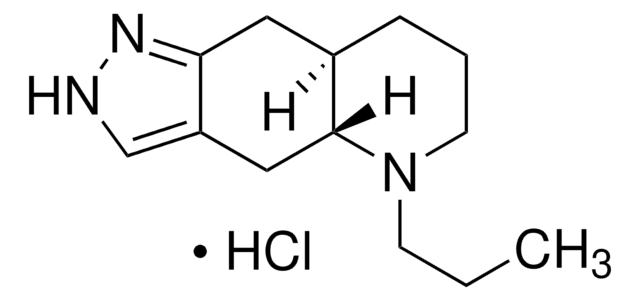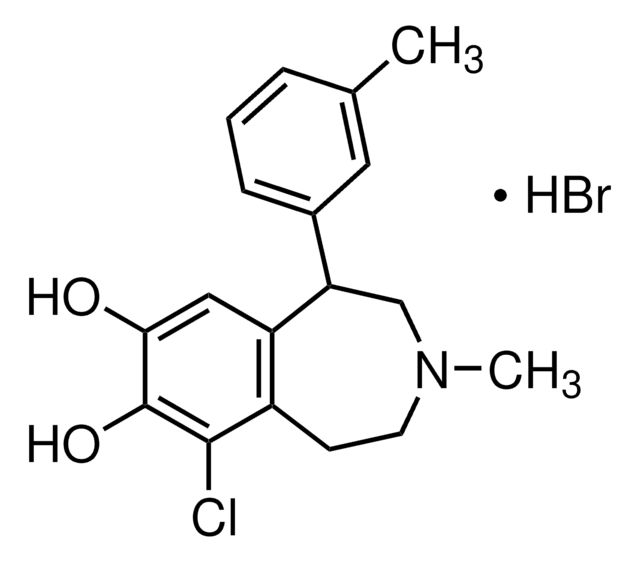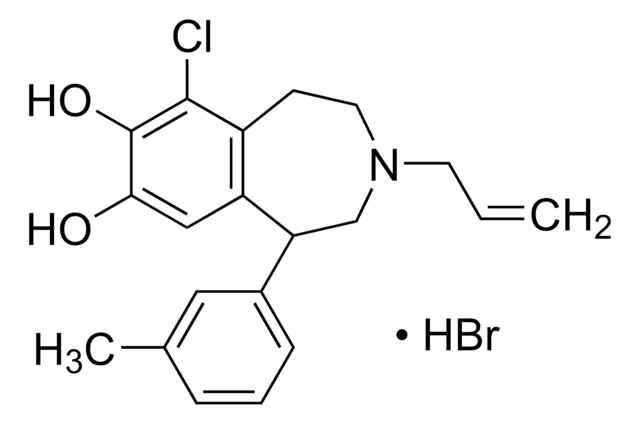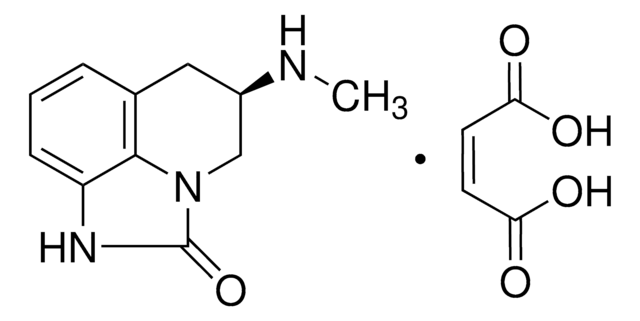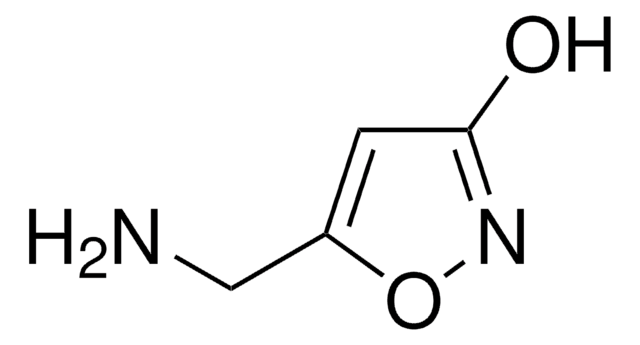S179
R(+)-SKF-81297 hydrobromide
≥98% (HPLC), solid
Synonyme(s) :
R-(+)-6-Chloro-7,8-dihydroxy-1-phenyl-2,3,4,5-tetrahydro-1H-3-benzazepine hydrobromide
About This Item
Produits recommandés
Pureté
≥98% (HPLC)
Forme
solid
Activité optique
[α]22/D +15.14°, c = 0.52 in DMF(lit.)
Conditions de stockage
desiccated
protect from light
Couleur
white to off-white
Solubilité
H2O: 6 mg/mL
DMSO: soluble
Chaîne SMILES
Br[H].Oc1cc2[C@H](CNCCc2c(Cl)c1O)c3ccccc3
InChI
1S/C16H16ClNO2.BrH/c17-15-11-6-7-18-9-13(10-4-2-1-3-5-10)12(11)8-14(19)16(15)20;/h1-5,8,13,18-20H,6-7,9H2;1H/t13-;/m1./s1
Clé InChI
RMIJGBMRNYUZRG-BTQNPOSSSA-N
Application
- to test it effect on the spike firing in rat retinal ganglion cells
- in human embryonic kidney (HEK) 293T cells
- to test its inhibitory effect in microglial cells
Actions biochimiques/physiologiques
Code de la classe de stockage
11 - Combustible Solids
Classe de danger pour l'eau (WGK)
WGK 3
Point d'éclair (°F)
Not applicable
Point d'éclair (°C)
Not applicable
Équipement de protection individuelle
Eyeshields, Gloves, type N95 (US)
Certificats d'analyse (COA)
Recherchez un Certificats d'analyse (COA) en saisissant le numéro de lot du produit. Les numéros de lot figurent sur l'étiquette du produit après les mots "Lot" ou "Batch".
Déjà en possession de ce produit ?
Retrouvez la documentation relative aux produits que vous avez récemment achetés dans la Bibliothèque de documents.
Les clients ont également consulté
Notre équipe de scientifiques dispose d'une expérience dans tous les secteurs de la recherche, notamment en sciences de la vie, science des matériaux, synthèse chimique, chromatographie, analyse et dans de nombreux autres domaines..
Contacter notre Service technique

